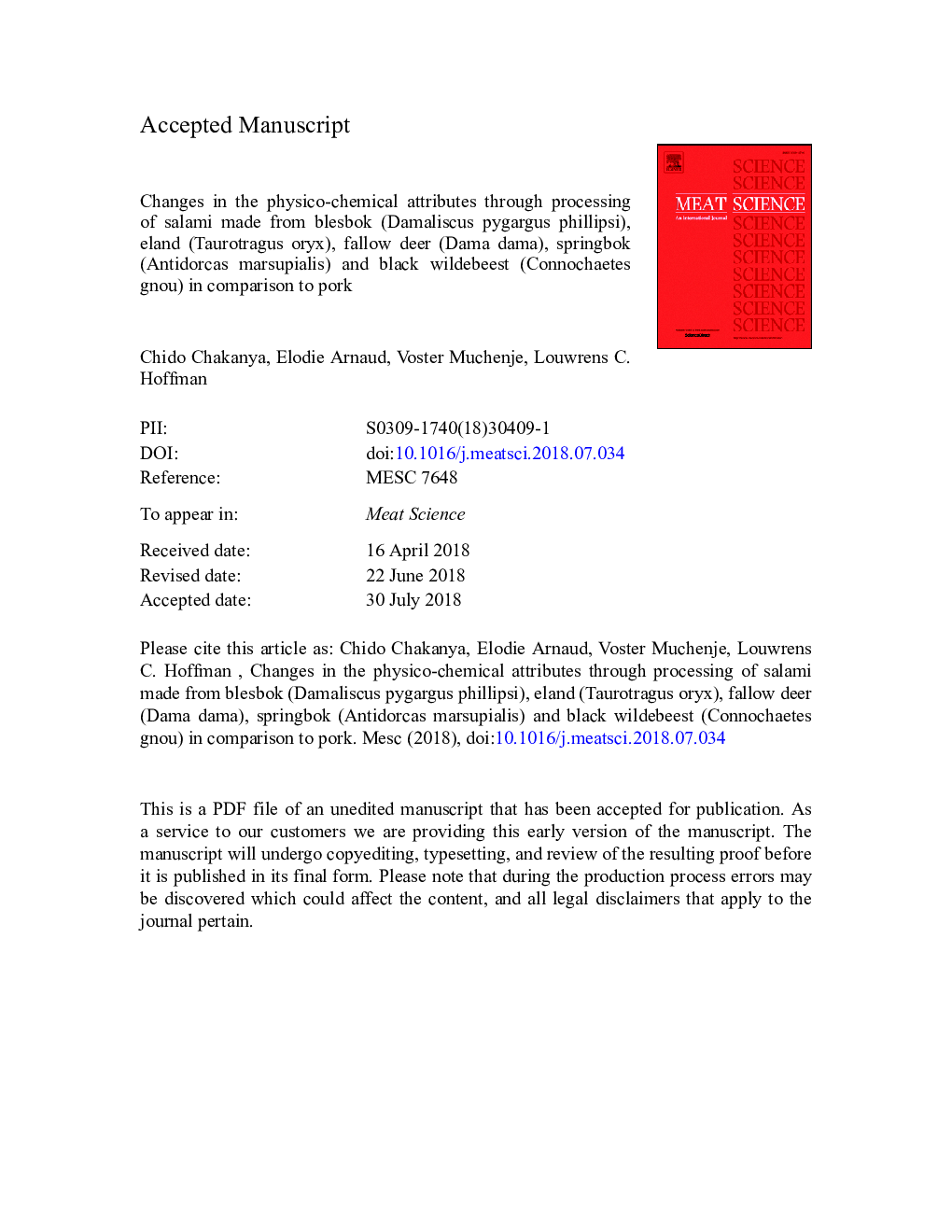| کد مقاله | کد نشریه | سال انتشار | مقاله انگلیسی | نسخه تمام متن |
|---|---|---|---|---|
| 8502296 | 1554048 | 2018 | 30 صفحه PDF | دانلود رایگان |
عنوان انگلیسی مقاله ISI
Changes in the physico-chemical attributes through processing of salami made from blesbok (Damaliscus pygargus phillipsi), eland (Taurotragus oryx), fallow deer (Dama dama), springbok (Antidorcas marsupialis) and black wildebeest (Connochaetes gnou) in co
دانلود مقاله + سفارش ترجمه
دانلود مقاله ISI انگلیسی
رایگان برای ایرانیان
کلمات کلیدی
موضوعات مرتبط
علوم زیستی و بیوفناوری
علوم کشاورزی و بیولوژیک
دانش تغذیه
پیش نمایش صفحه اول مقاله

چکیده انگلیسی
Drying kinetics and changes in proximate composition, pH, salt content, water activity (aw) and lipid oxidation through processing of salami made using five different game meat species were evaluated and compared to pork. Eight batches of salami from each species were made and sampled for analysis throughout processing. Processing time was a significant factor on all measured attributes whilst species affected (Pâ¯â¤â¯.05) pH and moisture but not drying kinetics. Black wildebeest meat exhibited higher (Pâ¯â¤â¯.05) pH than pork and other game meat (6.30 vs 5.63-5.80), which translated to higher (Pâ¯â¤â¯.05) salami pH throughout and at the end of processing (5.77). Final pH of all other salami ranged from 5.01 to 5.28, aw ranged from 0.88 to 0.92. TBARS remained lower than 1â¯mg MDA equivalent/kg. The study suggests that salami from these game species, excluding black wildebeest, can be produced using the same processing parameters as conventional pork salami and obtaining similar physico-chemical attributes.
ناشر
Database: Elsevier - ScienceDirect (ساینس دایرکت)
Journal: Meat Science - Volume 146, December 2018, Pages 87-92
Journal: Meat Science - Volume 146, December 2018, Pages 87-92
نویسندگان
Chido Chakanya, Elodie Arnaud, Voster Muchenje, Louwrens C. Hoffman,